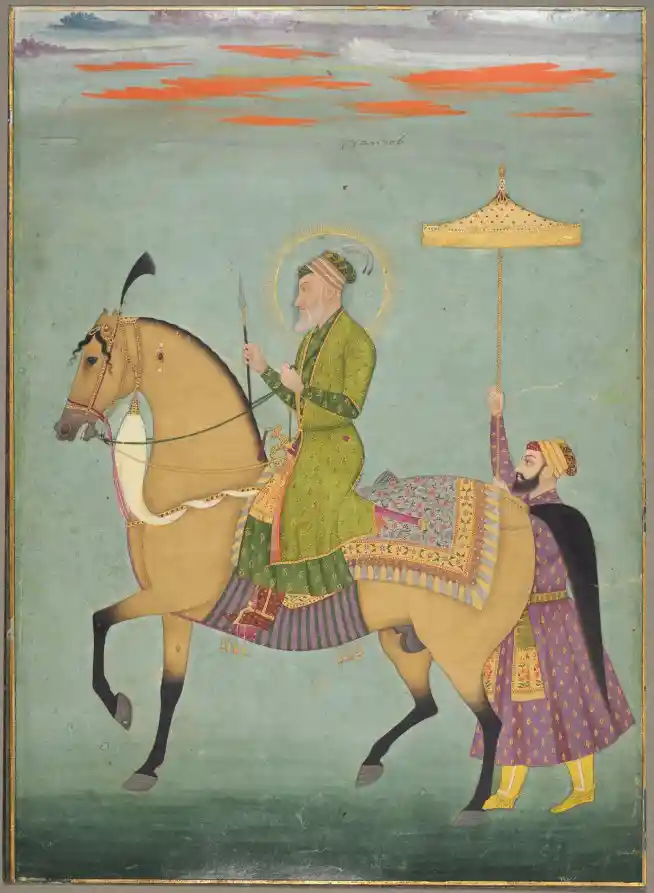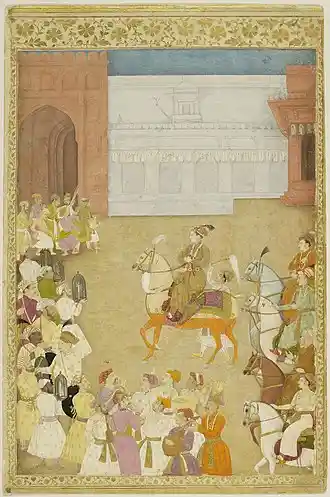Aurangzeb: A Crusader or An Overseer of the Hindus Pt I
Today, we will be challenging the conventional imagery of Aurangzeb as a crusader, by presenting newly done research to unveil his persona as a balanced ruler: one whose decisions were not purely based on religious, but rationality.

Portrait of Aurangzeb, source: WikiMedia Commons and The Cleveland Museum of Art
Muhi-ud-Din Muhammed, the sixth ruler of the Mughal dynasty, known by his reginal name- Aurangzeb Alamgir (1027-1118 Al-Hijra) is one of the most controversial Mughal rulers, the one most debated for the policies he had implemented. He ascended to the throne in 1658 after winning the war of succession against his own brothers and having imprisoned his father- Shahjahan.
The reign of Aurangzeb marked two crucial moments of the Mughal Empire. On one hand, it bore witness to the zenith of the Mughal rule. It was at this time that most territories were under Mughal rule. On the other hand, the legacy of Aurangzeb had been incapable of ruling and thus began the decline of the Mughal rule.
The reason why Aurangzeb became a topic of research among many new studies and scholarship is that Aurangzeb is seen to be following the footsteps of a bigoted ruler; one who continuously wrecked Akbar’s efforts of a harmonious society to the ground.
Aurangzeb: An Emperor maintaining Cordial Ties or The Defender of Islam
There is no doubt that Aurangzeb was more pious than the ones who ruled before him, as there are instances that he had abstained from all forms of alcohol and opium (as they were prohibited by Islam) and prayed regularly, sewed prayer-caps and studied, and memorized Quran by copying it in his free time.
Historians believed that though Aurangzeb was definitely more orthodox in his personal religious beliefs, however, he rarely led that overpower his political status as an emperor. The Quran stresses the need to build a pleasant society on the basis of common points among persons of different faith and also preaches to ensure the security of the worship places of the non-Muslims.
Aurangzeb seemed to follow this by not forcing his wife, daughter-in-law, and the rest of Rajput women to convert their faith.
Audrey Truschke who has written extensively on Aurangzeb, also confirms with the point that as an upholder of Islam, Aurangzeb condemned any ruler who would practice bigotry as according to Shari’at (the fundamental concept of Islam) the king is a representative of God on Earth and therefore a king cannot raze God’s prosperous creations.
These beliefs were well reflected in a letter that he had sent to Raja Rana Singh - the Rajput ruler of Mewar in 1654 - which read,
“Because the persons of great kings are shadows of God, the attention of this elevated class, who are the pillars of God’s court, is devoted to this: that men of various dispositions and different religions (mazahib) should live in the vale of peace and pass their days in prosperity, and no one should meddle in the affairs of another.”
However, Jadunath Sarkar believes that cordial ties were not respected by Aurangzeb. He believed that Aurangzeb wanted to annex Marwar because “his plan of forcible conversion of the Hindus required the Jaswant’s state should sink into a quiescent dependency or a regular province of the empire.”
Since both Mewar and Marwar were strategically located in Rajputana, it further enticed Aurangzeb to take full control over those regions. He believed that Aurangzeb wanted to deprive Marwar of ‘efficient leadership.’ As Jaswant Singh had also been a supporter of Dara Shikoh, Aurangzeb’s policies against Marwar in 1678 were directed as a punishment to his family.
However, one must question why would Aurangzeb wait for almost two decades to punish Jaswant Singh for supporting Dara Shikoh? Were the actions really taken to suppress the non-Muslim rulers, or could it be a different political situation that led to such policies?
Contrary to what Sarkar perceived, Jaswant Singh actually enjoyed the highest mansab in Aurangzeb’s court. This shows that rather than personal or religious reasons, the actions may have been fueled by politics. As in one of the instances, one can see that Aurangzeb refused Shaikh-ul-Islam’s suggestion to issue a fatwa to do away with the campaign against a Muslim ruler.
Sarkar further accuses Aurangzeb of not admitting non-Muslims as administrative officers. However, evidence shows otherwise. Aurangzeb seems to have admitted a large number of non-Muslims into his administration, and the admission was based solely on merit and not on religion.
“The religion has nothing to do with the state and worldly affairs. If recommendations are honored and it is accepted as the merit and rule of the state then the whole of the structure of the state would change. What would happen to the non-Muslim rulers and the non-Muslim officials? The king appoints people at any key places and grants them designations on merit and eligibility and religious interference or recommendation has nothing to do with it.”
These were the words of Aurangzeb upon the suggestion of a public officer who asked him to appoint Muslims and replace Hindu officials. Under the reign of Aurangzeb, the Hindu participation in the elite level increased by 50% and Hindus occupied about 31.6% of nobility.
Marathas enjoyed a mansab rank of 5000, Shivaji’s son Shahu was also given mansab ranks of 7000. Aurangzeb also interacted with various scholars in order to engage in discourses and debates. Such evidence is contrary to the conventional belief of Aurangzeb as a bigoted ruler.
Nonetheless, the fact that he was a practitioner of Islam is not being discredited, rather being put through scrutiny against the conventional historiography.
The next section will take into account the reimposition of the jiziya (tax) by Aurangzeb and study it through a political lens to counter the image created on the basis of communal dissonance.

Wedding procession of Dara Shikoh, with Shah Shuja and Aurangzeb behind him. Royal Collection Trust, London


